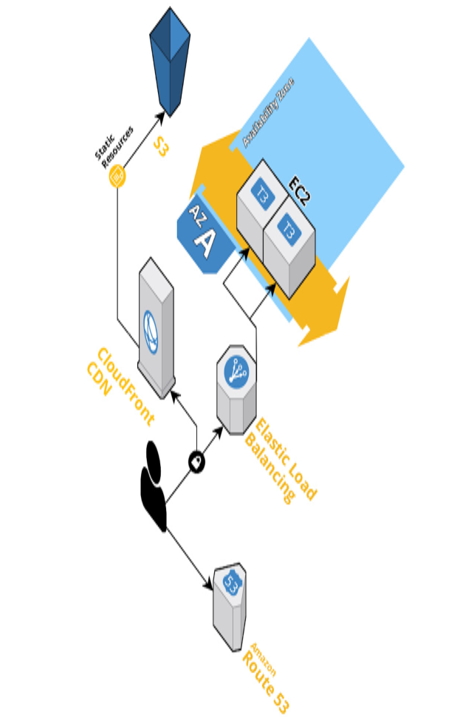Object storage
Object storage is a storage architecture that organizes and manages data as discrete units called objects. Unlike traditional file or block storage, which organizes data into a hierarchical filesystem or fixed-sized blocks, object storage stores data as independent objects with unique identifiers. Each object consists of data, metadata, and a unique identifier, typically in the form of a globally unique identifier (GUID).
Let’s look at the characteristics of object storage :
- Scalability: Object storage is highly scalable, allowing organizations to store and manage vast amounts of data. It eliminates the limitations of traditional storage systems, as objects can be added or removed without affecting the overall system performance. This scalability makes it suitable for applications with massive data requirements, such as big data analytics, content delivery networks, and archival storage.
- Metadata: Objects in object storage are associated with metadata, which provide descriptive information about the object. Metadata can include attributes such as object name, creation date, file type, and user-defined metadata. This rich metadata allows for efficient searching, indexing, and categorization of objects, facilitating data organization and retrieval.
- Durability and reliability: Object storage systems employ data redundancy mechanisms to ensure high durability and reliability. Objects are typically stored across multiple physical devices or distributed storage nodes, ensuring that data remains intact even in the event of hardware failures. Redundancy techniques such as data replication or erasure coding are used to protect against data loss and ensure data integrity.
- Data accessibility: Object storage provides universal access to data through simple application programming interfaces (APIs) such as Representational State Transfer (REST) or Simple Storage Service (S3). These APIs allow applications and users to access and manipulate objects over the network, making it easier to integrate object storage with various applications, cloud services, and platforms.
- Cost-effectiveness: Object storage offers cost advantages compared to traditional storage systems. It eliminates the need for expensive infrastructure upgrades and simplifies data management by leveraging commodity hardware and distributed storage architectures. Object storage systems are designed to optimize storage efficiency, reducing overall storage costs, and allowing organizations to scale their storage infrastructure economically.
Amazon S3, Google Cloud Storage, and Azure Blob Storage are three prominent cloud-based object storage services offered by leading cloud service providers. These services provide highly scalable, durable, and secure storage solutions for a wide range of applications and use cases:
Amazon S3 is a widely used object storage service offered by Amazon Web Services (AWS). It allows users to store and retrieve any amount of data from anywhere on the web. Some of the key features and details of Amazon S3 are as follows:
- Scalability: Amazon S3 is designed to scale seamlessly, allowing users to store and retrieve virtually unlimited amounts of data. It can handle any volume of data, from a few gigabytes to multiple petabytes, without any upfront capacity planning.
- Durability and availability: Amazon S3 provides high durability by automatically replicating data across multiple Availability Zones within a region. It offers 99.999999999% (11 nines) durability, ensuring that data remains intact even in the event of hardware failures or natural disasters.
- Security: Amazon S3 offers robust security features to protect stored data. It supports access control mechanisms, including Identity and Access Management (IAM) policies, bucket policies, and access control lists (ACLs). Additionally, it provides encryption options for data at rest and in transit. Figure 4.1 depicts the use of an object storage AWS S3 bucket in an AWS cloud environment. Please note that the S3 bucket lies outside of the Availability Zone shown in this figure:

Figure 4.1 – An S3 object storage bucket in an AWS environment